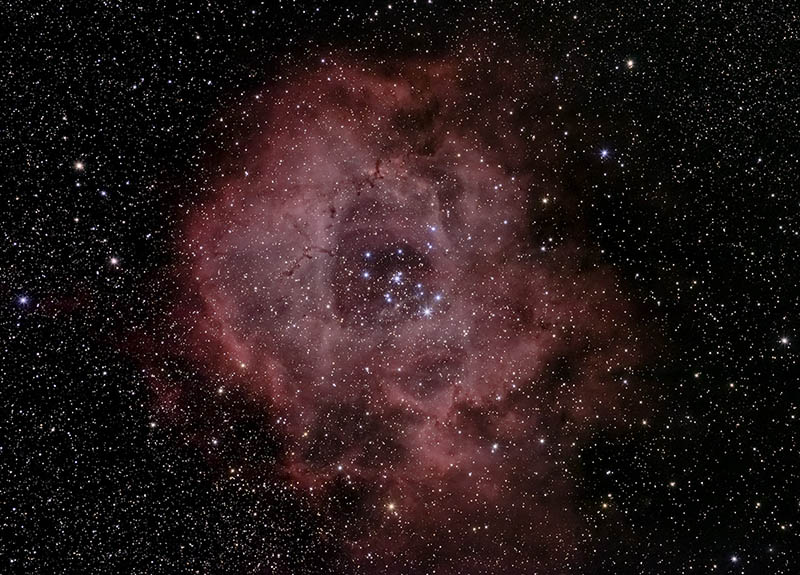December 14, 2017

The Rosette Nebula. I've done this before but always had trouble framing it, it is so big it fills the frame at 500mm. The Rosette Nebula is located in the Monoceros constellation region. The central star cluster and nebula lie at a distance of about 5,000 light-years from Earth and measure roughly 130 light years in diameter. The bright central stars were formed from the dust and gas of the nebula.

I think the atmosphere must have been unusually stable last night, I had really good results with everything. The largest galaxy here is NGC 1300, a unusually shaped barred spiral galaxy about 61 million light-years away in the constellation Eridanus. The galaxy is about 110,000 light-years across. It is a member of the Eridanus Cluster, a cluster of 200 galaxies. Its apparent size to us on Earth is about 7 arc minutes. It is small and faint, I was really surprised at how well this turned out. For a 500mm lens, this is doing pretty good.

The Skull Nebula, NGC 246, is a planetary nebula in the constellation Cetus.
It is about 1600 light years away and 4-6 light years in diameter.
I have done this before but never got the detail I got here.

A tighter crop of the Skull Nebula. Its apparent size to us here on Earth is about 3 arc minutes. That's pretty small for a 500mm lens. A disk the size of a dime at 2.5 miles is about an arc second, so imagine 180 dimes lined up 2.5 miles away, that would be the size of the object I'm photographing. The Rosette Nebula, for comparison, is about 1.3 degrees in diameter, or about 80 arc minutes.
HOME